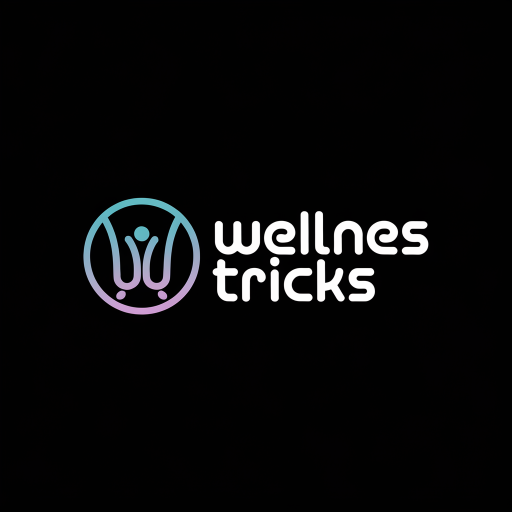The Breathing Trick That Calms Your Mind in 60 Seconds
Is it really possible to calm your mind in just 60 seconds with a simple breathing trick? Many people swear by this technique, claiming it transforms their mental state almost instantly. By understanding how controlled breathing affects your body, you can unlock its potential benefits. Discovering the right steps and timing can make all the difference, so let’s explore how this method can enhance your daily life and resilience against stress.
Key Takeaways
- Engage in deep breathing by inhaling for four counts, holding for four counts, and exhaling for six counts to promote relaxation.
- Focus on your breath to activate the parasympathetic nervous system, reducing stress and inducing calmness quickly.
- Find a quiet space, close your eyes, and repeat the breathing technique for about a minute to achieve immediate calmness.
- Use this technique during stressful moments or before important events to enhance focus and clarity.
- Consistent practice of this breathing method builds resilience and empowers emotional well-being over time.
Understanding the Science of Breathing
Breathing is more than just an automatic function; it’s a powerful tool that can significantly impact your mental state. When you focus on your breath, you engage your body’s natural relaxation response.
This is where breathing techniques for anxiety come into play. By consciously controlling your breath, you lower stress hormones and activate the parasympathetic nervous system, promoting calmness.
You’re not just inhaling and exhaling; you’re sending signals to your brain that it’s time to relax. Understanding the science behind this process can empower you to harness your breath effectively, transforming a simple act into a vital strategy for emotional well-being. Additionally, practicing a quick breathing technique can enhance your ability to manage anxiety in high-pressure situations.
The Benefits of Controlled Breathing
Controlled breathing can be a powerful tool for reducing stress and enhancing your focus. By consciously regulating your breath, you can calm your mind and gain clarity in challenging situations. This simple practice not only helps you feel more centered but also improves your overall well-being. Engaging in deep breathing exercises can significantly contribute to mental clarity and provide a much-needed reset for the mind and body.
Stress Reduction Techniques
Have you ever noticed how a few deep breaths can shift your entire mindset? Controlled breathing techniques can significantly reduce your stress levels. By focusing on your breath, you engage your body’s relaxation response, calming your mind. Here’s a quick look at some effective techniques:
| Technique | Description |
|---|---|
| Diaphragmatic Breathing | Breath deeply into your belly. |
| 4-7-8 Breathing | Inhale for 4, hold for 7, exhale for 8. |
| Box Breathing | Inhale, hold, exhale, hold for equal counts. |
| Alternate Nostril | Breathe through one nostril, then the other. |
| Pursed Lip Breathing | Inhale through the nose, exhale slowly through pursed lips. |
Try these techniques whenever stress creeps in!
Enhanced Focus and Clarity
How often do you find your mind wandering when you need to concentrate? Controlled breathing can help.
By focusing on your breath, you activate the parasympathetic nervous system, promoting relaxation and enhancing mental clarity.
This simple technique encourages you to center your thoughts and dismiss distractions, sharpening your focus.
When you take deep, intentional breaths, you increase oxygen flow to your brain, boosting cognitive function.
In just 60 seconds, you can regain control, making it easier to tackle tasks with a clear mind.
Commit to this practice, and you’ll notice a remarkable improvement in your ability to concentrate and think clearly.
Step-by-Step Guide to the 60-Second Breathing Trick
To get started with the 60-second breathing trick, find a quiet space where you won’t be disturbed.
Once you’re settled, focus on your breath, allowing yourself to tune out distractions. This simple practice can help you regain a sense of calm and clarity in just a minute. Incorporating calming breathwork into your routine can significantly enhance your overall well-being.
Find a Quiet Space
Finding a quiet space is essential for effectively practicing the 60-second breathing trick.
Look for a location where you won’t be interrupted—your home, a park, or even a quiet corner in your office. Turn off any distractions, like your phone or noisy electronics.
Ensure the lighting is comfortable and the temperature is just right for you. If possible, choose a spot where you feel safe and at ease.
This environment will help center your thoughts and prepare you for the calming process ahead.
Focus on Your Breath
What if you could transform your state of mind in just a minute?
To start, close your eyes and take a deep breath in through your nose, allowing your belly to expand.
Hold that breath for a moment.
Now, slowly exhale through your mouth, releasing any tension.
Repeat this process, focusing solely on the sensation of your breath entering and leaving your body.
If your mind wanders, gently guide it back to your breath.
After about a minute, you’ll notice a shift in your thoughts and feelings.
This simple act grounds you, bringing clarity and calmness to your busy mind.
When to Use This Breathing Technique
Whenever you’re feeling overwhelmed or anxious, this breathing technique can offer an immediate sense of calm.
You might find it helpful during stressful meetings, before a big presentation, or when you’re faced with an unexpected challenge.
It’s also effective in moments of conflict, whether at work or in personal relationships.
Use this technique if you notice racing thoughts or a tight chest—signs your body is reacting to stress.
By integrating this practice into your daily routine, you’ll build resilience, making it even easier to access calmness whenever life feels chaotic.
Additionally, this simple breathing exercise can significantly enhance mental clarity and reduce mental fog, allowing you to think more clearly in stressful situations.
Tips for Enhancing Your Breathing Practice
To get the most out of your breathing practice, consider these tips that can deepen your experience and enhance its effectiveness. Creating a calm environment, focusing on your posture, and setting a specific intention can significantly improve your sessions. Additionally, practicing proper breathing techniques can lead to enhanced concentration and mental clarity.
| Tip | Description | Benefit |
|---|---|---|
| Calm Environment | Choose a quiet space with minimal distractions. | Enhances focus and clarity. |
| Good Posture | Sit or stand straight to allow free airflow. | Promotes optimal breathing. |
| Set an Intention | Define your goal before starting. | Increases motivation. |
Real-Life Success Stories
As you explore the transformative power of breathing techniques, it’s inspiring to hear how others have harnessed these practices to achieve remarkable changes in their lives.
Take Sarah, who struggled with anxiety; within weeks of incorporating deep breathing into her routine, she noticed a significant reduction in panic attacks.
Then there’s Mike, a busy executive, who found clarity and focus during high-pressure meetings by using the 4-7-8 breathing method.
These stories illustrate that simple techniques can lead to profound shifts, reminding you that with commitment and practice, you too can experience the calming benefits of mindful breathing in your life. Research suggests that breathing techniques can significantly enhance sleep quality and reduce stress levels, making them a valuable tool for anyone seeking better rest.
Integrating Breathing Techniques Into Daily Life
How can you seamlessly weave breathing techniques into your everyday routine?
Start by setting reminders on your phone to take short breaks throughout the day.
When you feel stress rising, take a moment to practice deep breathing—inhale for four counts, hold for four, and exhale for six.
You can integrate this technique during mundane tasks, like waiting in line or commuting.
Try using mindful breathing before important meetings or while winding down for bed.
By making these practices habitual, you’ll notice increased calmness and clarity, helping you manage daily stresses more effectively.
Consistency is key to transforming your mindset.

